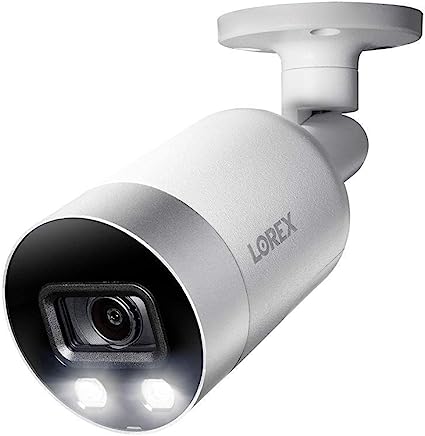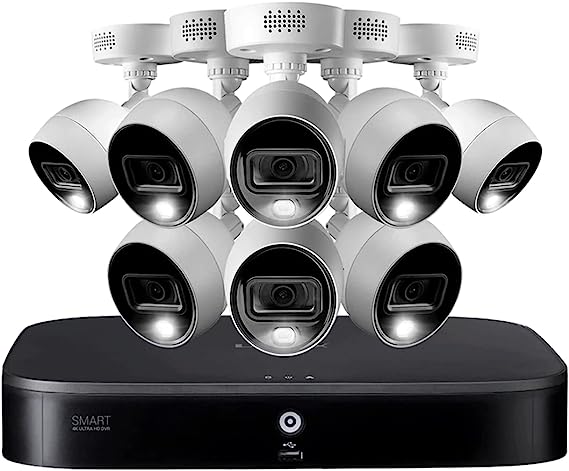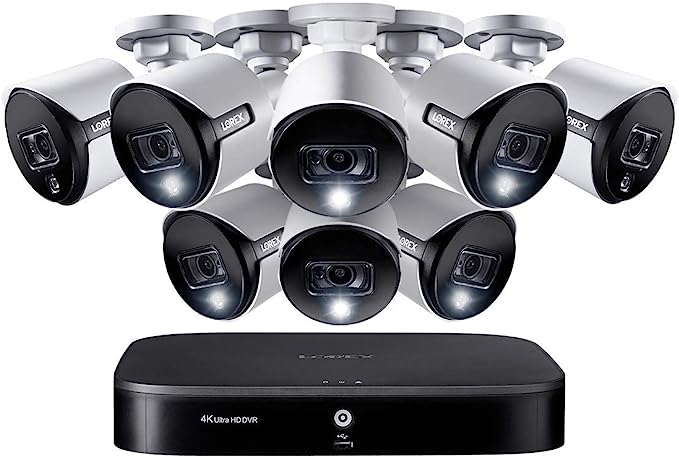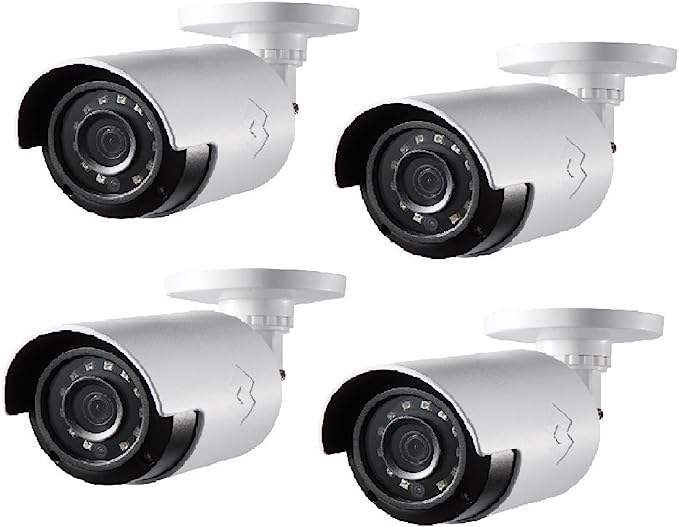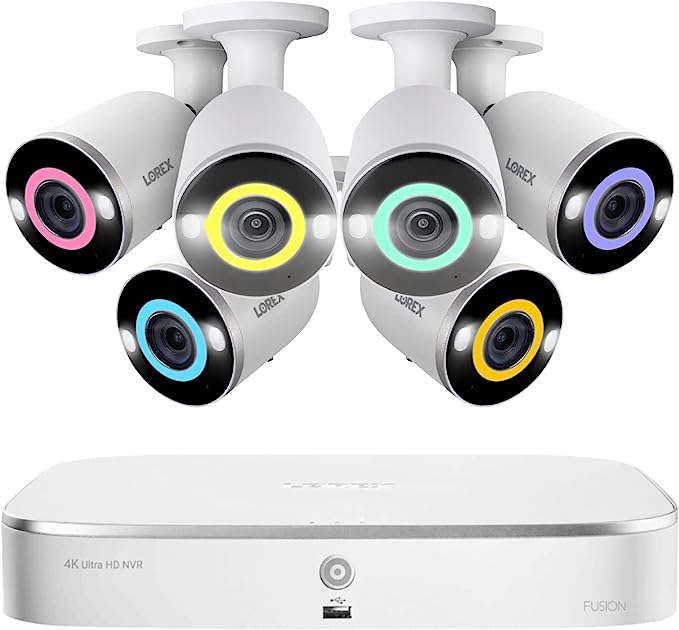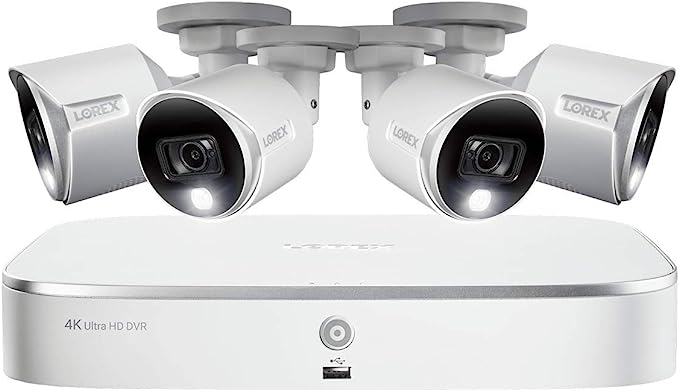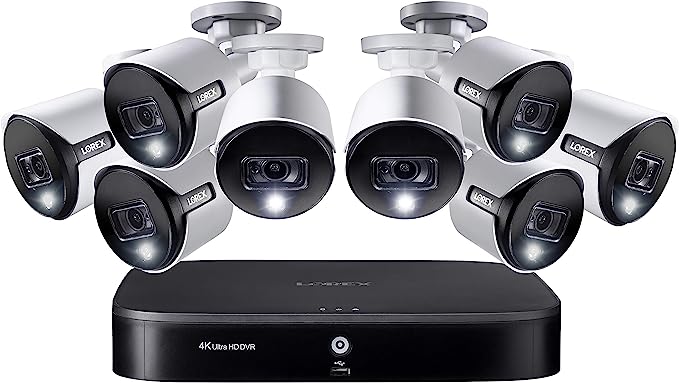Table of Contents
Considerations Before Hiding Security Cameras: Ensuring Privacy and Effective Surveillance
When it comes to ensuring the safety and security of your home or business, hiding security cameras can be a practical solution. However, before you embark on concealing your surveillance cameras, there are several important considerations to keep in mind. In this article, I’ll share some key factors you should consider before hiding your security cameras. Drawing from my personal experience and industry expertise, I’ll provide valuable insights to help you make informed decisions that balance privacy and effective surveillance.
Legal and Ethical Considerations
It’s crucial to understand the legal and ethical implications of hiding security cameras. Familiarize yourself with local laws and regulations regarding video surveillance in your area. Different jurisdictions may have specific requirements, such as the need to inform individuals of camera presence through signage. Respecting privacy rights is essential, so ensure your camera placement adheres to legal and ethical standards.
Define Surveillance Objectives
Before hiding your security cameras, clearly define your surveillance objectives. Determine the specific areas you want to monitor and the reasons behind it. Identifying high-risk areas or vulnerable entry points will help you strategically place cameras for maximum effectiveness. By understanding your surveillance needs, you can make informed decisions about camera positioning and coverage.
Privacy Boundaries
Respecting privacy boundaries is of utmost importance when installing security cameras. Ensure your cameras are not pointed towards private areas, such as bedrooms, bathrooms, or neighboring properties. Consider the field of view and adjust camera angles accordingly to focus solely on public spaces and areas of concern. Respecting privacy while maintaining effective surveillance builds trust and avoids potential legal issues.
Lighting and Visibility
Consider lighting conditions and visibility when choosing camera locations. Ensure that the areas you want to monitor have sufficient lighting for clear video footage. If necessary, install additional lighting sources to enhance visibility. However, avoid placing cameras in direct sunlight or areas with extreme glare, as it can affect image quality. Striking the right balance between lighting and camera placement is crucial for effective surveillance.
Concealment Methods
There are various ways to hide security cameras effectively. Consider using camouflage techniques to blend cameras seamlessly into their surroundings. Utilize decorative objects or everyday items that can serve as clever disguises, such as plants, clocks, or artwork. Concealment not only protects the cameras from tampering but also maintains a sense of privacy for occupants and visitors.
Testing and Maintenance
Regularly test and maintain your hidden security cameras to ensure optimal performance. Check camera functionality, image quality, and video recording capabilities. Clean camera lenses periodically to prevent dust or debris from affecting the footage. Conduct routine inspections to ensure the cameras remain concealed and in proper working order. By proactively maintaining your hidden cameras, you can rely on their effectiveness when it matters most.
Personal Experience: Finding the Right Balance
In my personal experience, striking the right balance between effective surveillance and privacy concerns is crucial. By considering legal requirements, defining surveillance objectives, respecting privacy boundaries, and implementing appropriate concealment methods, I’ve achieved a sense of security without compromising privacy. Regular testing and maintenance have ensured that my hidden cameras remain reliable and effective.
Types of Hidden Security Cameras: Exploring Discreet Surveillance Options
When it comes to securing your home or business, hidden security cameras provide a discreet way to monitor your surroundings. These covert surveillance devices offer an added layer of protection without drawing attention. In this article, we’ll delve into the different types of hidden security cameras available in the market. Drawing from personal experience and industry knowledge, we’ll explore the various options to help you make an informed decision that meets your specific security needs.
Miniature Cameras: The Power of Tiny
Miniature cameras are incredibly small in size, making them ideal for discreet surveillance. These cameras can be easily concealed in various objects or areas, such as within a potted plant, behind a bookshelf, or even inside everyday items like pens or buttons. Despite their small size, miniature cameras can still deliver impressive video quality and capture crucial details.
Disguised Cameras: Hiding in Plain Sight
Disguised cameras are designed to blend seamlessly into their surroundings by mimicking everyday objects. These cameras can take the form of clocks, smoke detectors, wall outlets, or even teddy bears. Disguised cameras not only provide covert monitoring but also serve a practical purpose within the environment, ensuring that no one suspects they are being watched.
Outdoor Camouflage: Nature’s Secret
Outdoor camouflage cameras are specifically designed to hide within the outdoor environment. They often resemble birdhouses, rocks, or other natural elements found in your garden or landscaping. These cameras are weatherproof and blend effortlessly into their surroundings, allowing you to discreetly monitor your outdoor spaces without arousing suspicion.
Wireless and Nanny Cameras: Flexibility and Convenience
Wireless hidden cameras offer the freedom to place them anywhere without the need for wiring. These cameras connect to your Wi-Fi network and can be easily installed in various locations, providing flexibility in surveillance. Nanny cameras, a type of wireless camera, are often used for monitoring caregivers or babysitters discreetly. They can be placed in objects like stuffed animals or baby monitors.
Body-Worn Cameras: Capture On the Go
Body-worn hidden cameras are designed for personal surveillance and capturing footage while on the move. These cameras are often worn as accessories, such as pens, glasses, or even clothing buttons. Body-worn cameras are useful in situations where covert recording is necessary, such as private investigations or personal safety.
Personal Experience: Finding the Perfect Fit
In my personal experience, hidden security cameras have provided peace of mind and discreet surveillance. I’ve used a combination of miniature cameras, disguised cameras, and outdoor camouflage cameras to monitor both indoor and outdoor areas. The flexibility and inconspicuous nature of these cameras have allowed me to keep a watchful eye on my property without raising any suspicions.
Strategic Placement Techniques for Hiding Security Cameras: Achieving Effective Surveillance
When it comes to concealing security cameras, strategic placement is key. The right placement ensures effective surveillance while maintaining the discreet nature of hidden cameras. In this article, I’ll share valuable insights and personal experiences to help you master the art of strategic camera placement. From choosing inconspicuous locations to concealing wires, these techniques will ensure your security cameras remain hidden while providing optimal coverage.
Blend with the Surroundings
To ensure your security cameras go unnoticed, choose inconspicuous locations that blend seamlessly with the surroundings. Look for areas that naturally attract minimal attention, such as corners, alcoves, or high shelves. Avoid placing cameras directly in the line of sight or at eye level, as they may draw unwanted attention.
Consider Line of Sight
While it’s important to hide your security cameras, you must also ensure their line of sight is not obstructed. Place the cameras strategically to capture the areas you want to monitor. Consider the field of view and adjust the camera angle accordingly. Experiment with different positions to achieve optimal coverage without compromising concealment.
Utilize Existing Fixtures or Structures
One effective technique for hiding security cameras is integrating them into existing fixtures or structures. For example, you can conceal a camera within a hollowed-out bookshelf, behind a decorative wall panel, or within a piece of artwork. This technique allows you to leverage the environment to your advantage, making the cameras virtually undetectable.
Use Decorative Objects
Incorporating security cameras into decorative objects can be a creative way to hide them effectively. Consider using everyday items such as vases, figurines, or plant pots to conceal the cameras. Ensure the decorative objects are strategically placed to provide an unobstructed view while camouflaging the camera within the overall aesthetic.
Concealment Techniques
Concealing wires and cables is crucial for maintaining the discreet nature of hidden cameras. Use cable covers, conduit tubing, or paintable cable channels to hide the wires and blend them with the surroundings. This step ensures a clean and seamless installation while preventing any visual clues that might reveal the presence of the camera.
Outdoor Considerations
When hiding security cameras outdoors, pay attention to the environment. Camouflage the cameras within outdoor elements like birdhouses, garden statues, or plants. Ensure the cameras are protected from weather conditions while still providing a clear view of the intended surveillance area. Opt for weatherproof cameras specifically designed for outdoor use.
Personal Experience: Finding the Perfect Balance
In my personal experience, strategic camera placement has been crucial in achieving effective surveillance while keeping the cameras hidden. I’ve utilized existing structures, decorative objects, and outdoor camouflage techniques to ensure optimal coverage without arousing suspicion. Concealing wires and cables has also played a significant role in maintaining the discreet nature of the hidden cameras.
Creative Ideas for Hiding Security Cameras: Concealment with Style and Innovation
When it comes to securing your home or business discreetly, creative ideas for hiding security cameras can be both effective and visually appealing. By blending these essential surveillance devices into the environment, you can achieve optimal coverage while maintaining the aesthetic integrity of your space. In this article, I’ll share some imaginative and practical ways to hide security cameras. Drawing from personal experience and industry expertise, these creative ideas will help you conceal your cameras with style and innovation.
Decorative Objects as Concealment
One of the most ingenious ways to hide security cameras is by incorporating them into decorative objects. Consider using items such as picture frames, decorative clocks, or even customized artwork. By carefully placing the camera within or behind these objects, you can maintain a stylish and inconspicuous appearance while ensuring effective surveillance.
Disguise within Electronics
Electronics provide excellent opportunities for hiding security cameras. Consider integrating cameras into functional devices like speakers, televisions, or even routers. With a little creativity, you can make the cameras blend seamlessly with your existing electronics, ensuring that they go unnoticed by visitors or potential intruders.
Inconspicuous Placement
Think outside the box when it comes to camera placement. Explore unconventional locations such as inside bookshelves, behind curtains, or within planters. By strategically positioning the cameras in these unexpected spots, you can achieve discreet surveillance while maintaining an element of surprise.
Outdoor Camouflage
For outdoor surveillance, use natural elements to camouflage your security cameras. Opt for models that resemble outdoor objects like rocks, birdhouses, or garden statues. These disguised cameras seamlessly blend into the environment while providing an unobstructed view of your outdoor spaces.
Customized Enclosures
If you’re feeling crafty, consider designing customized enclosures to hide your security cameras. Use materials that match the aesthetic of your space, such as wood, metal, or fabric, and create enclosures that complement the surroundings. These custom enclosures not only conceal the cameras but also add a unique touch of creativity to your space.
Personal Experience: Blending Style and Security
In my personal experience, incorporating creative ideas for hiding security cameras has been both practical and aesthetically pleasing. By disguising cameras within decorative objects, electronics, and customized enclosures, I’ve achieved effective surveillance without compromising the style of my home. These innovative solutions have provided peace of mind while adding a touch of uniqueness to my space.
Utilizing Smart Technology for Discreet Monitoring: Enhancing Security with Innovative Solutions
In the digital age, smart technology has revolutionized the way we approach security and surveillance. When it comes to discreet monitoring, leveraging these advanced solutions can offer unparalleled convenience and effectiveness. In this article, I’ll explore the benefits of utilizing smart technology for discreet monitoring and share my personal experiences with these innovative solutions. From wireless cameras to remote access and control, these smart technologies empower you to enhance your security measures while maintaining a discreet approach.
Wireless Cameras: Flexibility and Convenience
Wireless security cameras eliminate the need for cumbersome wiring, making them ideal for discreet monitoring. These cameras connect to your Wi-Fi network, allowing you to place them anywhere within range. With wireless cameras, you have the flexibility to install them in strategic locations without drawing attention to cables or wires. This wireless convenience ensures a seamless integration into your environment while providing effective surveillance.
Remote Access and Control: Monitoring On the Go
One of the most significant advantages of smart technology is the ability to remotely access and control your security cameras. Through mobile apps or web interfaces, you can monitor your cameras from anywhere, anytime. This feature enables discreet monitoring even when you’re away from your property, ensuring peace of mind and allowing you to respond promptly to any security concerns.
Smart Home Integration: Seamlessly Connected
Integrating your security cameras with other smart home devices enhances the overall security ecosystem of your property. By connecting your cameras with voice assistants or smart home hubs, you can control and monitor your surveillance system with ease. Smart home integration allows you to include security cameras in automated routines, receive alerts on connected devices, and even control cameras through voice commands, ensuring a seamless and discreet monitoring experience.
Motion Detection and Alerts: Targeted Monitoring
Smart technology brings intelligent features like motion detection and alerts to your security cameras. These features allow cameras to focus on specific areas of interest and notify you when motion is detected. With customizable settings, you can fine-tune the sensitivity and receive alerts only for relevant events. Motion detection and alerts ensure that you are promptly notified of any potential security breaches while minimizing false alarms.
Personal Experience: Embracing Smart Surveillance
In my personal experience, embracing smart technology for discreet monitoring has been a game-changer. I’ve installed wireless cameras throughout my property, allowing me to monitor key areas without the hassle of wiring. The convenience of remote access and control has given me peace of mind, knowing that I can check on my property from anywhere. Integrating my cameras with other smart devices has further streamlined my security system, providing a seamless and discreet monitoring experience.
Maintenance and Testing of Hidden Security Cameras: Ensuring Reliable Surveillance
Hidden security cameras play a crucial role in monitoring and protecting your property discreetly. To maintain their effectiveness and reliability, regular maintenance and testing are essential. In this article, we’ll explore the importance of proper maintenance and testing for hidden security cameras. Drawing from personal experience and industry knowledge, we’ll provide valuable insights and practical tips to ensure your hidden cameras remain in optimal working condition for uninterrupted surveillance.
Dusting and Cleaning: Clearing the Path
Dust and debris can accumulate on hidden security cameras over time, obstructing the lens and affecting the image quality. Regularly dust off the cameras and clean the lenses using a soft, lint-free cloth to ensure clear and unobstructed views. Be gentle to avoid scratching the lens surface, as this can impact the camera’s performance.
Checking Power Supply: Ensuring Continuous Operation
Hidden cameras typically rely on a power source to function. Regularly inspect the power supply connections to ensure they are secure and free from damage. If using batteries, replace them as needed to prevent power interruptions. Consider utilizing backup power options, such as uninterruptible power supply (UPS) systems, to ensure continuous operation during power outages.
Verifying Recording and Storage: Preserving Evidence
The recording and storage capabilities of hidden cameras are essential for capturing and preserving evidence. Regularly check the recording functionality to ensure that the cameras are capturing footage as intended. Verify that the storage devices, such as DVRs or cloud-based systems, are functioning correctly and have sufficient space to store recorded footage. Periodically review and backup stored footage to prevent data loss.
Testing Connectivity: Stay Connected
Hidden cameras may utilize various connectivity options, such as Wi-Fi or wired connections. Regularly test the camera’s connectivity to the network or monitoring system to ensure seamless communication. Check for any signal or connection issues and troubleshoot as necessary. This step is crucial to maintain a reliable and uninterrupted surveillance system.
Evaluating Camera Angles and Field of View: Optimal Coverage
Over time, environmental changes or adjustments to the surroundings may impact the camera’s field of view. Regularly evaluate the camera angles and ensure they cover the intended areas effectively. Make necessary adjustments to maintain optimal coverage and ensure that the hidden cameras continue to capture the desired surveillance footage.
Personal Experience: Ensuring Peace of Mind
In my personal experience, regular maintenance and testing of hidden security cameras have been instrumental in ensuring continuous surveillance and peace of mind. By following a routine maintenance schedule, I’ve been able to identify and address potential issues before they affect the camera’s performance. Testing the connectivity and reviewing footage regularly have also helped me stay confident in the reliability of my hidden camera system.
Legal and Ethical Considerations: Navigating the World of Hidden Security Cameras
Hidden security cameras have become increasingly popular for discreet surveillance in homes, businesses, and public spaces. While these cameras offer enhanced security, it’s important to be aware of the legal and ethical considerations associated with their use. In this article, we’ll delve into the crucial aspects you should consider when utilizing hidden security cameras. Drawing from personal experience and industry insights, we’ll explore the legal requirements, privacy concerns, and ethical guidelines to ensure responsible and lawful use of hidden cameras.
Understanding Local Laws and Regulations
Before installing hidden security cameras, it’s essential to familiarize yourself with the local laws and regulations regarding their use. Different jurisdictions may have specific rules governing the placement, recording, and monitoring of surveillance devices. Research and comply with these laws to ensure that your camera usage remains within legal boundaries and avoids potential legal consequences.
Consent and Privacy
Respecting privacy rights is paramount when using hidden security cameras. In most jurisdictions, it is illegal to record in areas where individuals have a reasonable expectation of privacy, such as bathrooms, changing rooms, or private dwellings. If you are monitoring areas where individuals may have a reasonable expectation of privacy, such as common living areas in shared accommodations, it’s advisable to obtain informed consent from all parties involved.
Notifications and Signage
To maintain transparency and adhere to legal requirements, consider displaying appropriate signage indicating the presence of surveillance cameras. Visible signage serves as a deterrent and informs individuals that they are being recorded. It also helps establish a lawful basis for camera usage and promotes a sense of trust within the monitored space.
Data Protection and Storage
When capturing and storing footage from hidden security cameras, it’s crucial to handle personal data responsibly and in accordance with applicable data protection laws. Take measures to safeguard the recorded data, such as using secure storage devices, encryption, and access controls. Limit access to the footage only to authorized individuals and ensure its secure disposal when it is no longer needed.
Ethical Use of Surveillance
While hidden security cameras can provide valuable security benefits, it’s important to consider the ethical implications of their use. Ensure that your camera usage is proportionate to the intended purpose and avoids unnecessary intrusion into people’s lives. Regularly reassess the need for surveillance and balance it with respect for individual privacy and dignity.
Personal Experience: Respecting Privacy and Compliance
In my personal experience, being mindful of the legal and ethical considerations associated with hidden security cameras has been essential. Before installation, I researched and complied with the local laws and regulations to ensure that my camera usage remained within the legal boundaries. I also took steps to respect privacy by obtaining consent and displaying appropriate signage in areas where individuals might expect privacy. These measures have helped me maintain a responsible and lawful approach to using hidden security cameras.
Frequently Asked Questions (FAQ): Demystifying Hidden Security Cameras
Are you considering installing hidden security cameras to enhance the safety and security of your property? As with any new endeavor, you likely have questions. In this FAQ article, we’ll address some of the most commonly asked questions about hidden security cameras. Drawing from personal experience and industry expertise, we’ll provide answers and valuable insights to help you make informed decisions and gain a deeper understanding of these surveillance devices.
What are hidden security cameras?
Hidden security cameras, also known as covert or spy cameras, are surveillance devices designed to be discreetly concealed within objects or disguised as other items. They offer a way to monitor and capture video footage without drawing attention to the camera’s presence.
Where can hidden security cameras be used?
Hidden security cameras can be used in various settings, including homes, offices, retail stores, and public spaces. They are particularly useful in areas where traditional cameras may be easily noticed or when you want to maintain the aesthetic integrity of a space.
What are the benefits of hidden security cameras?
Hidden security cameras provide several benefits, such as discreet monitoring, enhanced security, and the ability to capture evidence without alerting potential intruders. They can be used for both preventive measures and post-incident investigations.
How are hidden security cameras powered?
Hidden security cameras are typically powered by batteries or by being connected to a power source. Battery-powered cameras offer flexibility in terms of placement but require regular battery replacement or recharging. Cameras connected to a power source provide continuous operation without the need for battery maintenance.
Can hidden security cameras record audio?
The ability to record audio depends on the specific camera model and local laws and regulations. It is important to check the legal requirements regarding audio recording in your jurisdiction before using hidden cameras with audio capabilities.
How do I view the footage captured by hidden security cameras?
The method of viewing footage depends on the camera’s configuration. Some hidden cameras offer built-in storage and can be accessed directly, while others may require connection to a recording device, such as a digital video recorder (DVR) or a network video recorder (NVR). Additionally, some cameras allow remote viewing through mobile apps or web interfaces.
Are hidden security cameras legal?
The legality of hidden security cameras varies by jurisdiction and the intended use. It’s important to research and understand the laws and regulations in your area before installing hidden cameras. In general, hidden cameras should not be used in areas where individuals have a reasonable expectation of privacy, such as bathrooms or private dwellings, without proper consent.
How can I ensure the privacy of individuals when using hidden security cameras?
Respecting privacy is crucial when using hidden security cameras. Consider the placement of the cameras, avoid recording private areas, and display appropriate signage to inform individuals of the camera’s presence. Obtaining informed consent when necessary is also essential to ensure privacy rights are respected.
Are there any maintenance requirements for hidden security cameras?
Like any surveillance device, hidden security cameras require regular maintenance to ensure optimal performance. This includes cleaning the lenses, checking power connections, and reviewing storage capacity. Refer to the manufacturer’s guidelines for specific maintenance recommendations.
